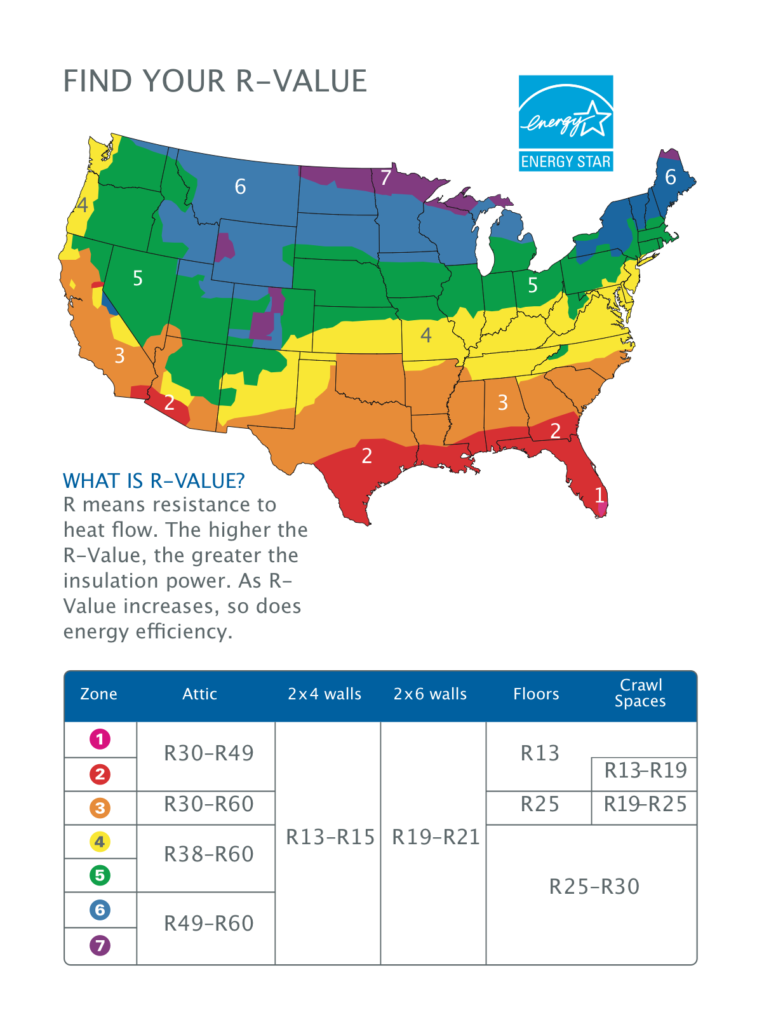R19 Insulation: All You Need to Know
The Basics of R19 Insulation
R19 Insulation is any type of insulation that achieves that specific R-Value measurement of R19.
R-value is used to judge thermal insulation performance and the higher the number, the better the product’s insulating ability. So R19 has better insulating ability than R13. Now R-Value ranges widely across products and home applications. Indeed you will see R60 in some places and R13 in others. The key is to understand what R-Value is required in different parts of your home.
An important note about R-Value.
R-Value is not the only way to measure insulation. Another key component is how insulation manages moisture. If your insulation cannot dissipate moisture over time (i.e. dry out) it will slump and lose its initial R-Value. This happens all the time with fiberglass and cellulose. Always make sure to choose an insulation that can manage moisture well and therefore keep it’s R-Value.
Why Would You Need R19 insulation?
R19 Insulation may be a Code Requirement. Residential insulation codes fall under ICC’s International Energy Conservation Code (IECC) which is adopted by most states. The states then publish their individual provisions. This is where you can find out if your insulation meets codes. A good guide is R-Value recommendations published by EnergyStar. As you can see from the map below, R19 is recommended for 2×6 walls across all climate zones in the US.
So if you are looking to build an efficient home that meets code, R19 Insulation may be required. Again, make sure to check your local requirements to make sure you are building to code.

A Common Place to Use R19 Insulation
The most common application of R19 Insulation is in a vertical wall framed by 2×6 studs. As mentioned above this is a common code requirement in some parts of the United States. R19 Insulation can also be used in other areas around the home, including floors and crawl spaces.
Typical ways to achieve R19 in a wall is by using batts or blown-in.
Insulation is Key but so is Air Sealing
Once you’ve found your R19 Insulation you should always make sure to air seal before installing, particularly on exterior walls. A leaky wall defeats the purpose of any insulation. In other words, it makes no sense to insulate a wall with R19 insulation that has holes in it. An airtight and well-insulated home will be an extremely comfortable and efficient environment.

There are tons of resources available on air sealing… from where to find leaks and how to address them. We’d start with identifying the major culprits. Make sure to check :
- Exterior door frames
- Window frames
- Outlets and switches
- Attic entrance
- All ducts
- Plumbing, fuel, or electrical penetrations
- Sill plates
- Outdoor water faucets
- Recessed lights
- Cracks and seams in the ceiling
From there you can determine the best method of air sealing – caulk, weather stripping, tape, flashing. Then go ahead and install your R19 insulation!
What Should I Use for R19 Insulation?
At Havelock Wool we make a number of different products to meet every home application. We have batt insulation that comes in R15 and R21 for both 2×4 and 2×6 framed walls including 16in OC and 24in OC. The R-Value per inch of our batts is 3.9. We also make a higher-performing blown-in insulation that has an R-Value per inch of 4.3. which equates to R15 in a 2×4 and R24 in a 2×6 cavity.
Please see all our products here:
Questions? Please contact us here:
